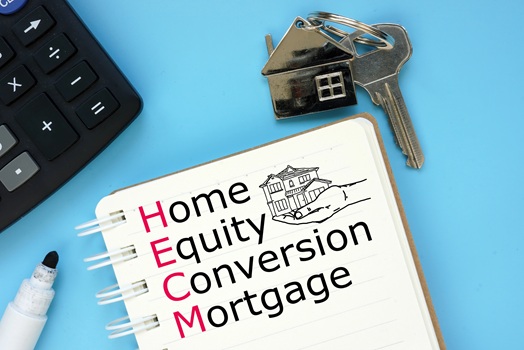
The Home Equity Conversion Mortgage (HECM) program, often called the reverse mortgage program, has travelled a remarkable path since its inception in 1961. From a single act of kindness to becoming a reliable financial resource for seniors, the HECM program has transformed into a cornerstone of retirement planning. This journey reflects decades of effort to create a tool that empowers older homeowners to access the equity in their homes without giving up the place they love.
- 1961 – The Beginning of Reverse Mortgages
- 1969 – Reverse Mortgages Reach the Senate
- 1983 – A Step Toward FHA-Insured Loans
- 1987 to 1988 – The Official Launch of the HECM Program
- 1994 – Transparency for Borrowers
- 1998 – Making the HECM Program Permanent
- 2000 to 2004 – Fee Adjustments and Refinancing Opportunities For HECM Programs
- 2013 – New Policies for Borrower Protection
- 2017 and Beyond – Higher HECM Program Loan Limits for Modern Needs
- HECM Program Continues To Evolve
1961 – The Beginning of Reverse Mortgages
It all started in Portland, Maine, when Nelson Haynes of Deering Savings & Loan created the first reverse mortgage for Nellie Young, the widow of his high school football coach. His goal was simple: to help her stay in her home after her husband’s passing. This compassionate act sparked the creation of a financial solution that would one day assist countless seniors across the country.
1969 – Reverse Mortgages Reach the Senate
The idea gained national attention when UCLA professor Yung Ping Chen presented the concept to the Senate Committee on Aging. During his presentation, he highlighted the potential of home equity as a means for older Americans to secure financial independence in retirement.
1983 – A Step Toward FHA-Insured Loans
Reverse mortgages became more credible when Senator John Heinz proposed backing them with the Federal Housing Administration (FHA). With this government approval, seniors felt reassured that these loans could become a trustworthy part of retirement planning.
1987 to 1988 – The Official Launch of the HECM Program
Congress authorised the Home Equity Conversion Mortgage Demonstration in 1987, creating a pilot programme. The following year, President Ronald Reagan signed the law that officially established HECM loans under the Department of Housing and Urban Development (HUD). This pivotal moment marked the true beginning of the reverse mortgage program as a safe and sustainable option for seniors.
1994 – Transparency for Borrowers
 Reverse mortgages in Greenville SC
Reverse mortgages in Greenville SCConsequently, the federal government required lenders to provide clear cost disclosures early in the application process, which in turn helped homeowners make informed decisions. Ultimately, this milestone reinforced the commitment to borrower protection and financial transparency.
1998 – Making the HECM Program Permanent
Meanwhile, the HUD Appropriations Act officially made the HECM program in Greenville SC a permanent part of HUD’s offerings. It introduced stricter fee disclosures and protections to ensure seniors were shielded from hidden costs. Permanency gave the program a strong foundation for long-term growth.
2000 to 2004 – Fee Adjustments and Refinancing Opportunities For HECM Programs
Initially, HUD revised origination fees in 2000, creating more consistent costs for borrowers. Soon after, by 2004, HECM refinancing became available, enabling homeowners to benefit from rising property values or lower interest rates. As a result, this added flexibility transformed reverse mortgages into an adaptable financial tool for evolving retirement needs.
2013 – New Policies for Borrower Protection
HUD introduced rules limiting the amount of equity accessible in the first year, helping prevent seniors in Greenville SC from depleting their funds too quickly. As a result, this change promoted financial stability, ensuring reverse mortgages supported long-term retirement planning.
2017 and Beyond – Higher HECM Program Loan Limits for Modern Needs
To reflect rising property values, the program’s borrowing limits increased, reaching $1,149,825 in 2024. These adjustments allow more homeowners, especially in higher-value markets, to benefit from the HECM program and secure additional retirement funds or cover healthcare costs.
HECM Program Continues To Evolve
Eventually, the HECM program has adapted to shifts in the housing market and the changing financial needs of older Americans. By regularly updating loan limits and refining its policies, the program continues to offer seniors a reliable path to financial independence while allowing them to remain in the homes they cherish.
Reverse Mortgage Specialist offers expert guidance for homeowners considering the HECM program. In addition, our team helps seniors understand eligibility, explore benefits, and navigate the application process so that the program supports each client’s unique retirement goals.
Call Reverse Mortgage Specialist now to learn how the HECM program can unlock the equity in your home and give you the financial flexibility you deserve. Secure your future and take control of your retirement today.

No comments:
Post a Comment